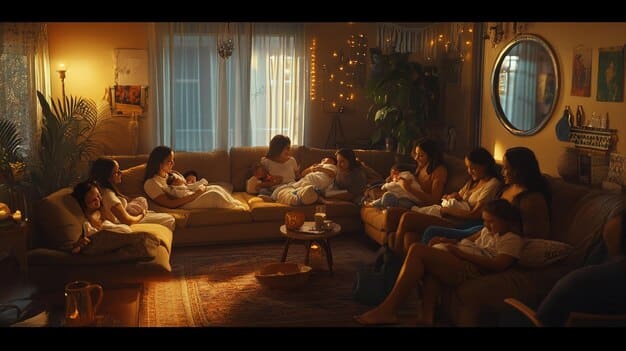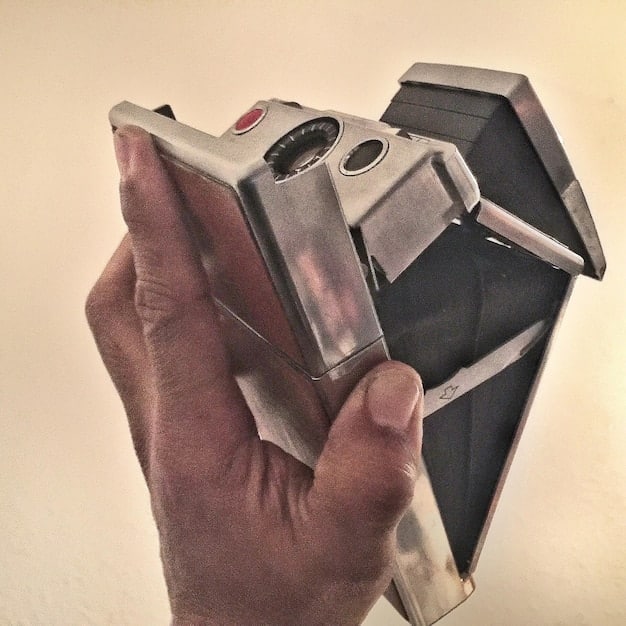Analog Revival: Exploring the US’s Luddite Movement in a Digital World

The resurgence of ‘analog’ subcultures in a digital world, particularly the growing Luddite movement in the US, reflects a counter-cultural trend of seeking authenticity, community, and mental well-being by disconnecting from pervasive digital technologies and embracing traditional, non-digital practices.
In an increasingly digital world, a curious phenomenon is taking hold in the United States: the resurgence of ‘analog’ subcultures. From vinyl records and film photography to handwritten letters and traditional crafts, a growing number of Americans are deliberately embracing technologies and practices from a pre-digital era. The rising ‘Luddite’ movement, characterized by skepticism or rejection of modern technology, is gaining traction as individuals seek respite from the always-on culture and a more tangible connection to the world around them.
The Allure of Analog in a Digital Age
The digital revolution has undoubtedly transformed nearly every aspect of modern life. However, an increasing number of people are finding themselves yearning for something more – something tangible, authentic, and perhaps, less overwhelming. This yearning is fueling a renewed interest in analog pursuits across various demographics in the US.
The allure of analog lies in its ability to offer a different kind of experience. Unlike the instant gratification and endless stream of information provided by digital devices, analog activities often require patience, skill, and a deeper engagement with the process. This can be incredibly rewarding in a society increasingly defined by speed and superficiality.

The Tactile and Sensory Experience
One of the primary draws of analog is the rich tactile and sensory experience it provides. Consider the feel of a vinyl record in your hands, the sound of the needle dropping onto the groove, or the warmth of a tube amplifier. These sensory details are often lost in the sterile and seamless world of digital technology.
The Element of Imperfection
Another appealing aspect of analog is its inherent imperfection. Unlike digital files that can be endlessly duplicated without any loss of quality, analog mediums are subject to wear and tear, distortion, and other imperfections. These imperfections, rather than detracting from the experience, often add to its character and charm.
- Vinyl Records: The warmth and richness of analog sound, coupled with the ritual of selecting and playing a record, offer a distinct contrast to streaming services.
- Film Photography: The deliberate process of composing a shot, developing the film, and printing the image fosters a deeper connection to the art of photography.
- Handwritten Letters: The personal touch of a handwritten letter, complete with its unique penmanship and occasional imperfections, conveys a level of thoughtfulness that is often absent in digital communication.
Ultimately, the allure of analog in a digital age is about reclaiming a sense of control, slowing down the pace of life, and connecting with the world in a more meaningful way. It’s a conscious choice to prioritize experience over efficiency, and authenticity over convenience.
The Rise of Modern Luddites
While the term “Luddite” is often used pejoratively to describe someone who is resistant to technology, the modern Luddite movement represents a more nuanced and complex phenomenon. These are not necessarily people who reject all technology, but rather individuals who are critical of its unchecked proliferation and its impact on society.
Many modern Luddites are motivated by concerns about privacy, mental health, and the erosion of traditional communities. They see the constant connectivity and distractions of the digital world as a threat to human well-being and seek to create spaces and practices that prioritize human connection and offline experiences.
Concerns About Privacy and Data Security
The increasing collection and use of personal data by tech companies and governments has led to growing concerns about privacy and data security. Modern Luddites often advocate for greater control over personal information and are wary of the surveillance capabilities of modern technology.
Mental Health and Digital Overload
The constant barrage of information and notifications from digital devices can lead to stress, anxiety, and burnout. Many people are finding themselves overwhelmed by the demands of the digital world and are seeking ways to disconnect and recharge.

- Digital Minimalism: A philosophy that encourages individuals to deliberately reduce the amount of technology they use in their lives.
- Offline Communities: The creation of intentional communities and gatherings that prioritize face-to-face interaction and shared experiences.
- Critical Consumption: A conscious effort to be more mindful of the technology we use and the values it promotes.
The rise of modern Luddites is not simply a rejection of technology, but a call for a more balanced and intentional approach to its use. It’s a movement that seeks to reclaim human agency in a world increasingly shaped by algorithms and artificial intelligence.
The Impact on Arts and Crafts
One of the most visible manifestations of the analog resurgence is the renewed interest in traditional arts and crafts. From knitting and sewing to woodworking and ceramics, people are rediscovering the satisfaction of creating things with their hands.
This trend is driven by a desire to reconnect with the physical world, to learn new skills, and to create objects that are both beautiful and functional. It’s also a reaction against the mass-produced and disposable nature of many modern products.
The Slow Craft Movement
The slow craft movement emphasizes the value of handmade goods and the importance of sustainable practices. It encourages crafters to use locally sourced materials, to minimize waste, and to create objects that are built to last.
The Rise of Maker Spaces
Maker spaces are community workshops that provide access to tools, equipment, and expertise for a variety of arts and crafts. These spaces foster creativity, collaboration, and skill-sharing, making traditional crafts more accessible to a wider audience.
The impact on arts and crafts extends beyond simply creating physical objects. It’s about fostering a sense of creativity, community, and connection to the past. These tangible skills offer a counterpoint to digital labor, allowing individuals to create something concrete and lasting.
The Resurgence of Analog Media
The digital revolution has transformed the media landscape, making it easier than ever to access music, movies, and books. However, there is a growing movement to reclaim analog media formats like vinyl records, film photography, and physical books.
This resurgence is driven by a desire for a more tactile and immersive experience, as well as a nostalgia for the past. Analog media formats offer a different kind of engagement than their digital counterparts, requiring more attention, patience, and appreciation for the physical object.
The Vinyl Record Revival
Despite the dominance of streaming services, vinyl record sales have been steadily increasing over the past decade. Collectors prize vinyl for its warm sound, its album artwork, and the ritual of playing a record on a turntable.
The Enduring Appeal of Print Books
Despite the convenience of e-readers, print books continue to hold a special place in the hearts of many readers. The tactile experience of holding a book, turning the pages, and smelling the paper is something that cannot be replicated by digital devices.
The resurgence of analog media is a testament to the enduring appeal of physical objects and the power of nostalgia. It’s a rejection of the disposability of digital culture and a celebration of the lasting value of tangible media.
Building Communities in the Analog World
While the digital world offers unparalleled opportunities for connection and communication, it can also be isolating. Many people are finding that the most meaningful connections are those forged in the physical world, through shared activities and face-to-face interaction.
This is driving a renewed interest in building communities in the analog world, through activities like joining a book club, volunteering for a local cause, or attending a craft workshop. These activities provide opportunities to connect with like-minded people, to learn new skills, and to contribute to something larger than oneself.
The Power of Face-to-Face Interaction
Face-to-face interaction allows for richer communication, deeper empathy, and a stronger sense of connection. It’s harder to misinterpret someone’s intentions or to disengage emotionally when you are interacting with them in person.
The Importance of Shared Experiences
Shared experiences create lasting memories and foster a sense of belonging. Whether it’s attending a concert, hiking in the woods, or working on a community garden, shared experiences provide opportunities to bond with others and to create meaningful connections.
Building communities in the analog world is about reclaiming the importance of human connection and fostering a sense of belonging. It’s about creating spaces and practices that prioritize empathy, collaboration, and shared experiences.
The Future of Analog Subcultures
The resurgence of analog subcultures is not simply a passing fad, but a reflection of deeper societal trends. As technology continues to advance and permeate every aspect of our lives, the desire for tangible experiences, human connection, and a slower pace of life is likely to grow.
The future of analog subcultures will depend on their ability to adapt and evolve in the face of technological change. These communities will need to find ways to embrace technology selectively, using it to enhance rather than detract from their core values.
Embracing Technology Selectively
Analog subcultures can use technology to connect with like-minded individuals, to share their knowledge and skills, and to promote their values. However, it’s important to be mindful of the potential downsides of technology and to use it in a way that is consistent with their core beliefs.
Finding a Balance Between Analog and Digital
The key to the future of analog subcultures is to find a balance between the analog and digital worlds. This means being able to appreciate the benefits of technology without sacrificing the value of tangible experiences, human connection, and a slower pace of life.
The resurgence of analog subcultures offers a powerful reminder that technology is a tool, not a master. By reclaiming control over our relationship with technology, we can create a more balanced, meaningful, and human-centered world.
| Key Point | Brief Description |
|---|---|
| 🎧 Analog Media | Vinyl records and film photography offer tactile experiences absent in digital formats. |
| ✍️ Arts & Crafts | Traditional crafts provide a connection to the physical world and foster creativity. |
| 🫂 Community Building | Face-to-face interaction and shared experiences foster meaningful connections. |
| 🛡️ Modern Luddites | Advocating for mindful technology usage and digital minimalism. |
Frequently Asked Questions
▼
Analog subcultures involve communities centered around non-digital or pre-digital technologies and practices. They emphasize tactile experiences, traditional skills, and face-to-face interactions over digital alternatives.
▼
Many seek relief from digital overload, privacy concerns, and a desire for more authentic experiences. Analog activities offer a tangible connection to the world and a slower pace of life.
▼
Modern Luddites aren’t anti-technology, but advocate balanced tech usage. They critique technology’s unchecked expansion and its impact on privacy, mental health, and communities.
▼
Traditional arts and crafts offer a creative outlet, skill-building opportunities, and a connection to physical materials, countering mass production and digital labor with tangible creations.
▼
Analog subcultures must adapt by selectively integrating technology while maintaining core values. Balancing analog and digital ensures meaningful experiences endure amid tech advancements, promoting a human-centered world.
Conclusion
The resurgence of analog subcultures in the US illustrates a growing desire for balance in a hyper-digital world. By embracing traditional practices and prioritizing human connection, these communities offer a compelling vision for a more meaningful and sustainable future.





